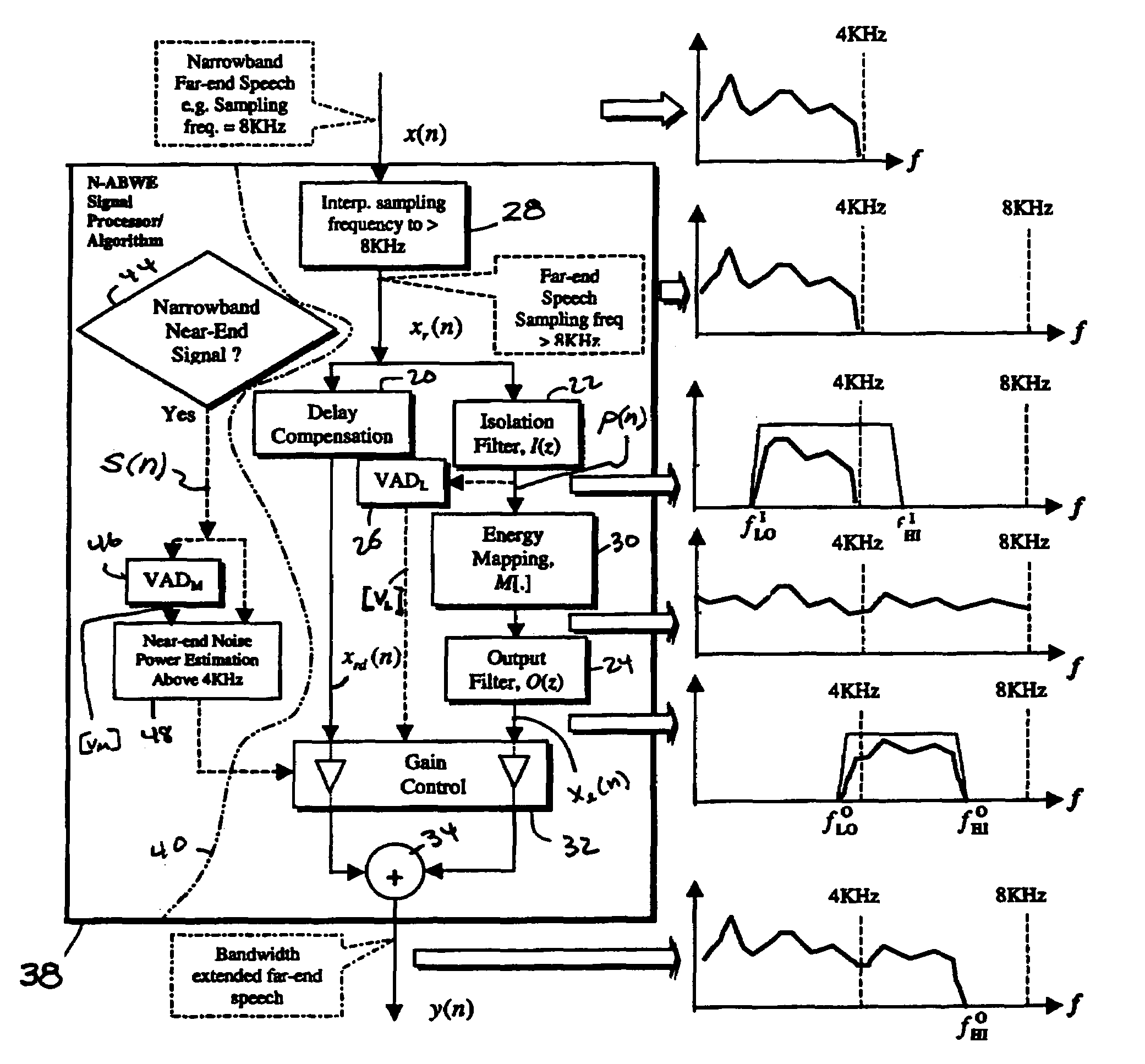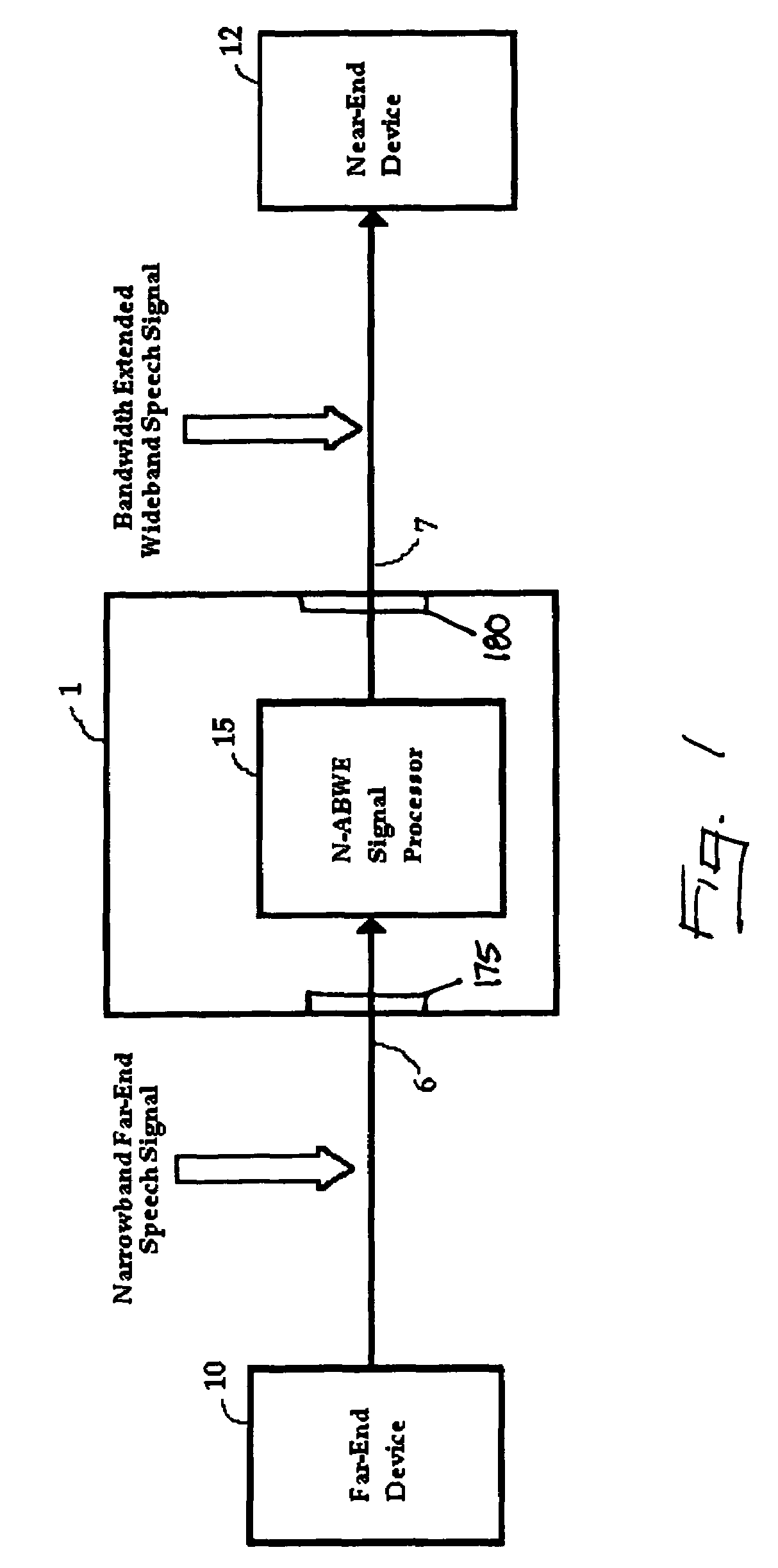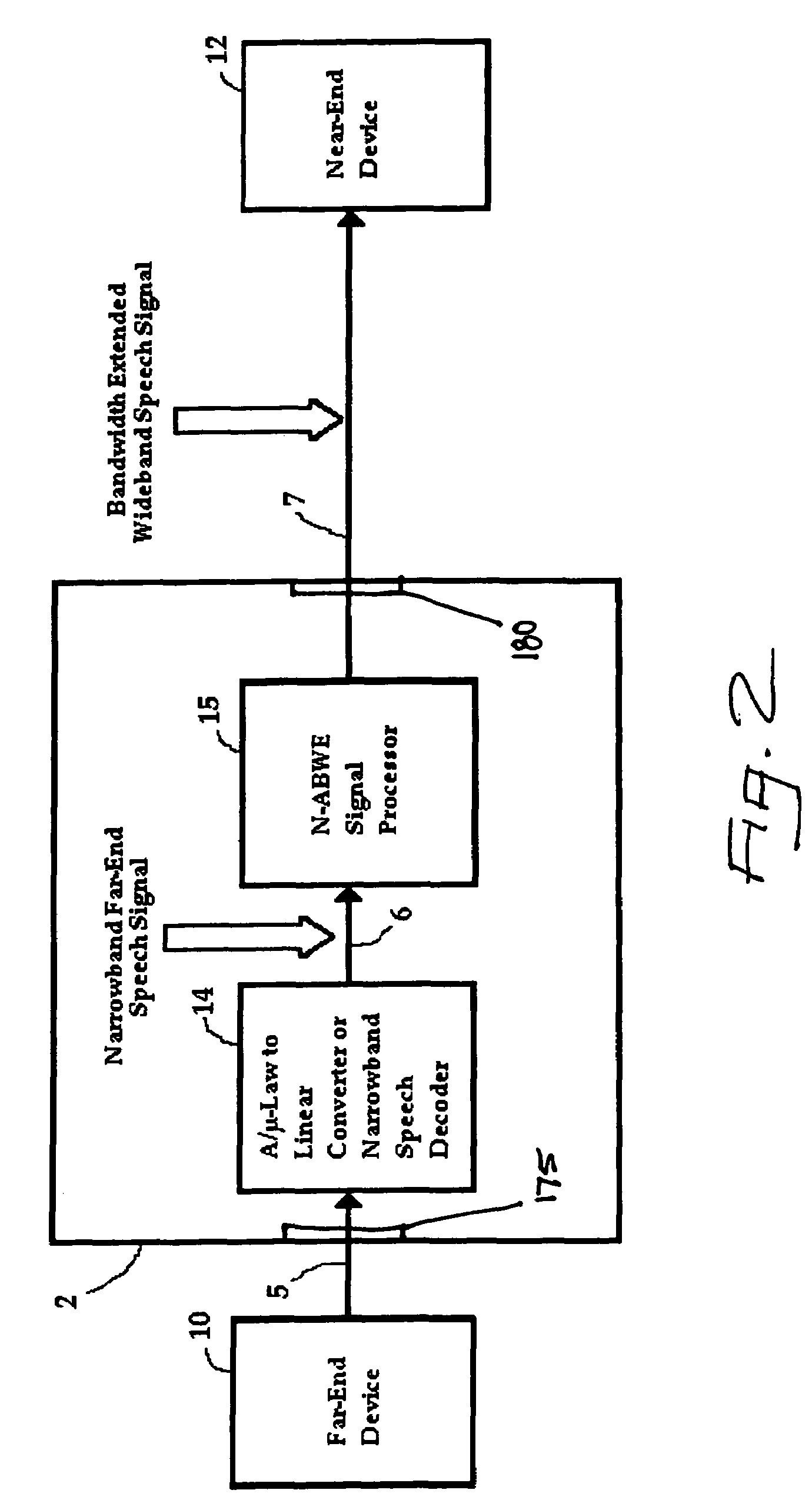Methods and apparatus for improving the quality of speech signals
a speech signal and quality technology, applied in the field of speech signal quality improvement methods and apparatus, can solve the problems of loss of speech quality in a number of ways, significant loss of intelligibility, and even more pronounced loss of intelligibility, so as to improve user experience, increase the bandwidth of speech communication, and improve the effect of speech fidelity
- Summary
- Abstract
- Description
- Claims
- Application Information
AI Technical Summary
Benefits of technology
Problems solved by technology
Method used
Image
Examples
embodiment 38
[0075]FIG. 9 schematically illustrates methods and apparatus associated with another example embodiment signal processor 49. Signal processor 49 is similar to the above described signal processor embodiment 38, although instead of passing only a single frequency band (such as, for example, that single band shown and described above as being bounded by fLOI and fHII in the case of isolation filter 22, and that single band shown and described above as being bounded by fLOO and fHIO for output filter 24), signal processor 49 by contrast is adapted to pass and process plural frequency bands for the purpose of generating a bandwidth extended speech communication for a given far-end speech communication, using filter banks 23 and 25 and multi-dimensional energy mapper 31. If the number of bands passed and processed by signal processor 49 for a given far-end speech communication equals B, for example, the output of the signal processor 49 can be written is the Z-domain as:
Y(z)=gxXrd(z)+GwT...
embodiment 58
[0085]The end-terminal device embodiment 58 to which the signal processor 60 of FIG. 11 relates has certain significant additional features (as compared to the network device embodiment of FIG. 7, for example) including bandwidth extension control 66 and volume control 68, each of which can further influence the gain control block 80, as is shown in FIG. 11. Signal processor 60 also includes loudspeaker compensation filter 68, as well as additional local ambient noise processing methods and apparatus represented by blocks 98 and 100.
[0086]The frequency response of a given loudspeaker transducer 52 in an end-terminal device handset 58, such as a telephone handset for example, will generally be known to the handset manufacturer. To compensate for this frequency response, a loudspeaker compensation filter 68, L(z), is provided. L(z) is a stable filter 68, with impulse response i(n), and is chosen according to
[0087]∂L(ⅇjθ)LTD(ⅇjθ)∂θθ∈[-π,π]δ(20)
to approximately equalize the loudspeak...
case 1 (
[0095no volume or bandwidth control):
[0096]gx={1if[υL]=o{gx:E{y2(n)}=E{xrd2(n)}}if[υL]=1(24)
and
gw=min({hacek over (σ)}w2(.),gw,max) (25)
PUM
 Login to View More
Login to View More Abstract
Description
Claims
Application Information
 Login to View More
Login to View More - R&D
- Intellectual Property
- Life Sciences
- Materials
- Tech Scout
- Unparalleled Data Quality
- Higher Quality Content
- 60% Fewer Hallucinations
Browse by: Latest US Patents, China's latest patents, Technical Efficacy Thesaurus, Application Domain, Technology Topic, Popular Technical Reports.
© 2025 PatSnap. All rights reserved.Legal|Privacy policy|Modern Slavery Act Transparency Statement|Sitemap|About US| Contact US: help@patsnap.com



